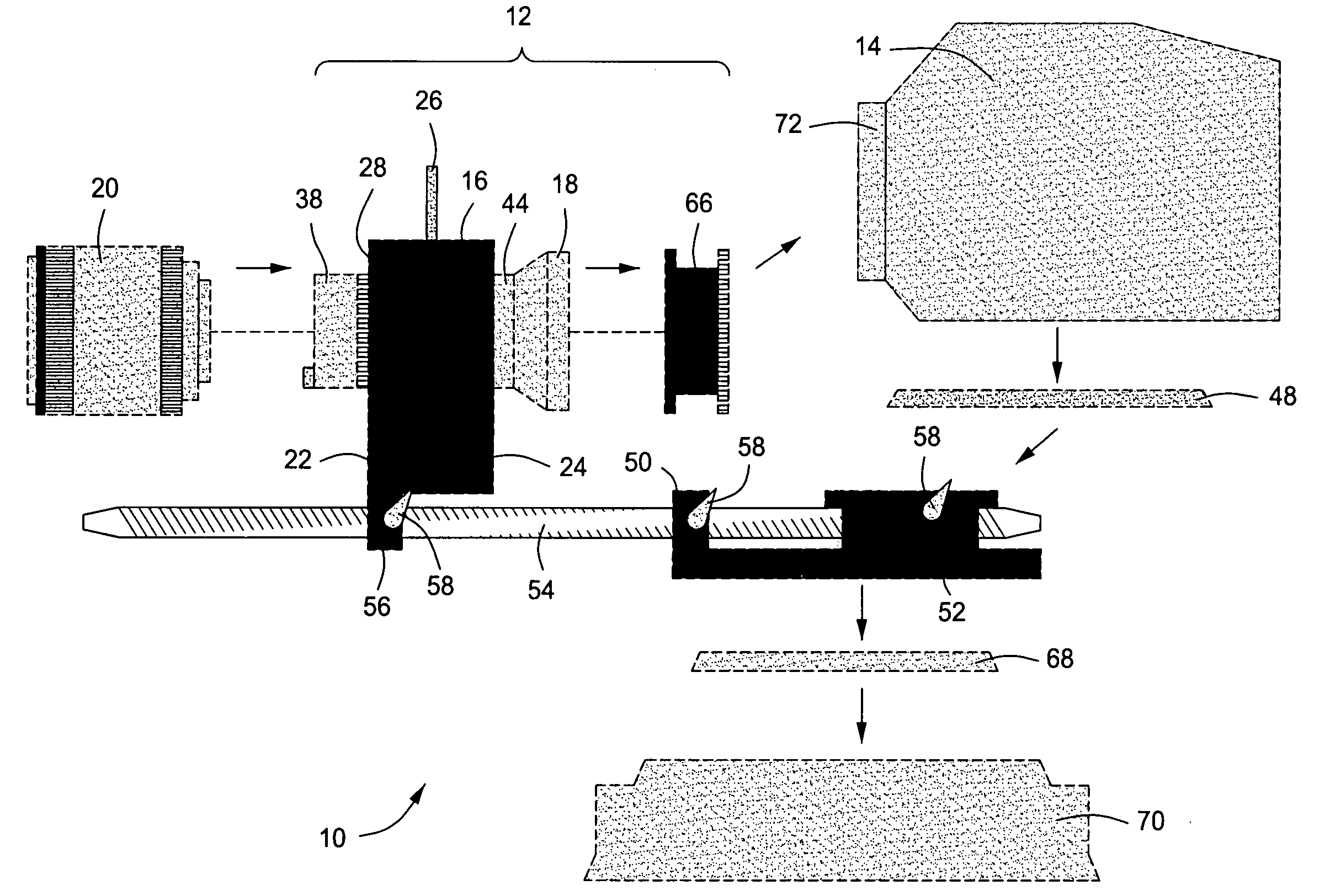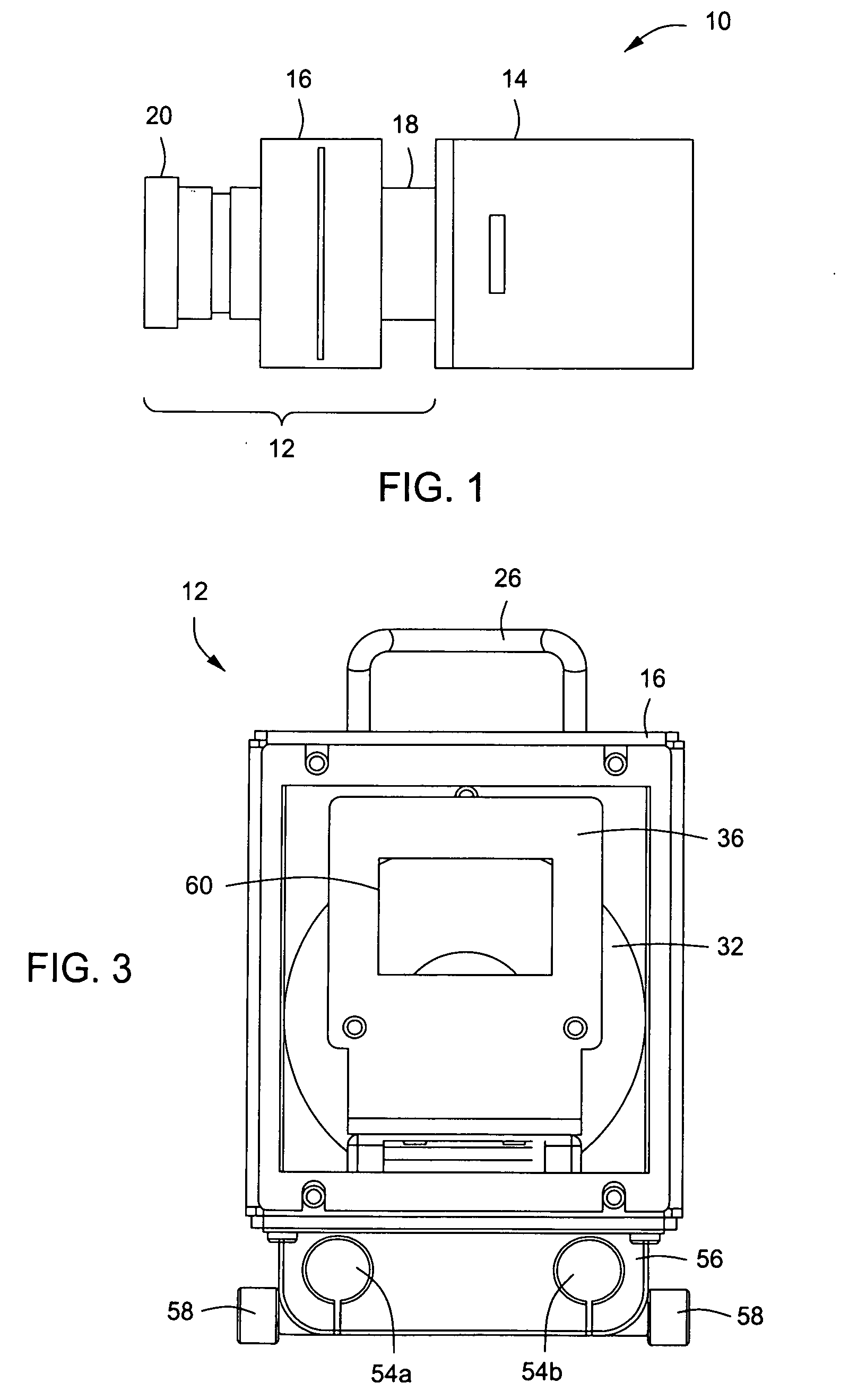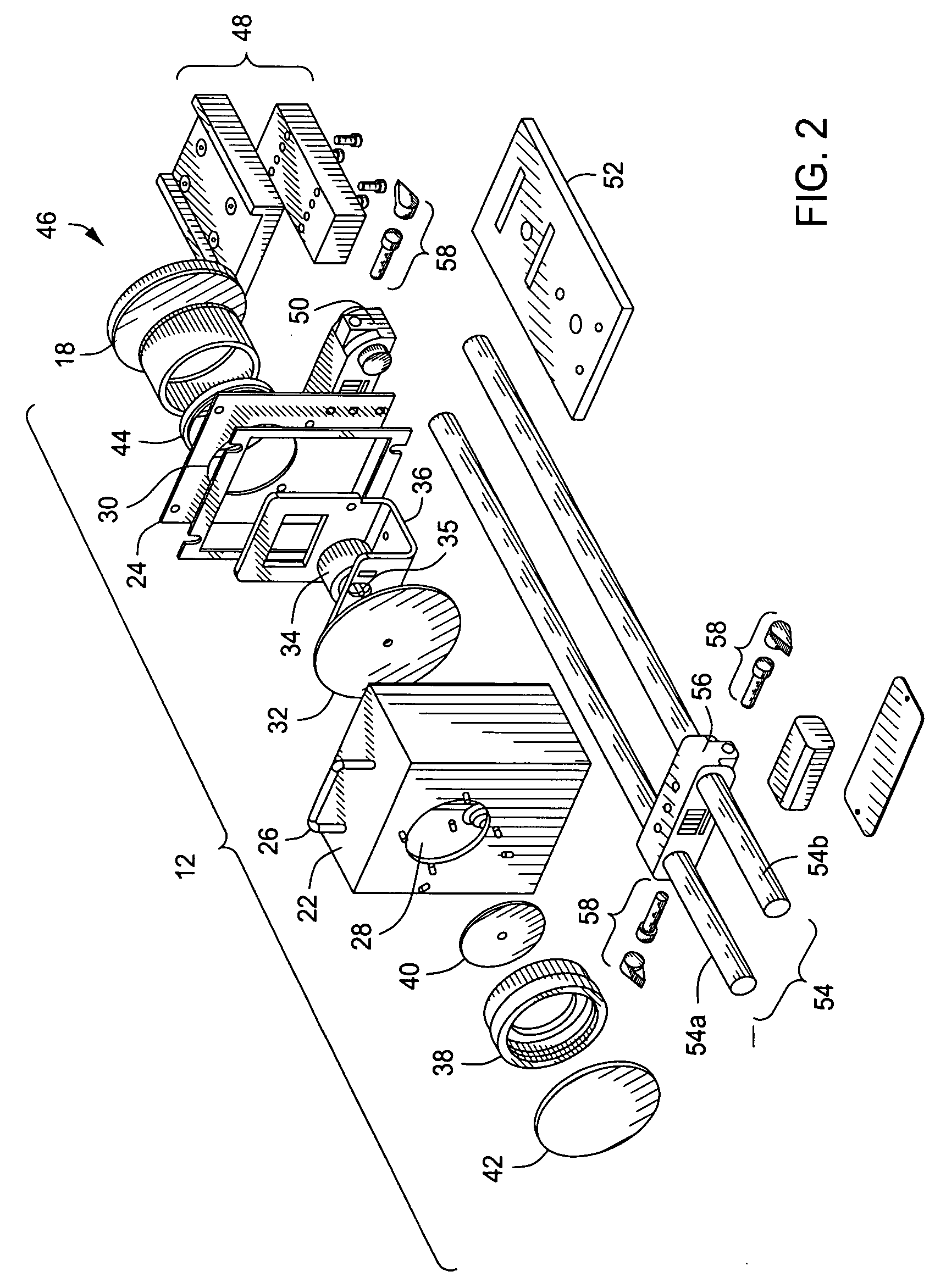System, method and apparatus for enhancing a projected image
a projection image and system technology, applied in the field of projection adapters, can solve the problems of high cost, inability to provide cinematic quality depth of field control, elusive depth of field (dof) problem, etc., and achieve the effect of reducing the optical depth of field, and enhancing a projected imag
- Summary
- Abstract
- Description
- Claims
- Application Information
AI Technical Summary
Benefits of technology
Problems solved by technology
Method used
Image
Examples
Embodiment Construction
[0022] While the making and using of various embodiments of the present invention are discussed in detail below, it should be appreciated that the present invention provides many applicable inventive concepts that can be embodied in a wide variety of specific contexts. The specific embodiments discussed herein are merely illustrative of specific ways to make and use the invention and do not delimit the scope of the invention.
[0023] Although it is possible to create the right combination of lenses and adapters so that the light from a 35 mm lens could be focused directly onto the camera sensor, it does not create the desired effect: the 35 mm look. Depth of focus is related to image size. If the final image is ⅓rd of an inch (about 16 mm) then there will be a very deep focus. Getting an object in focus in the foreground against an out-of-focus background might require that the background be 50 feet or more behind the foreground. This deep focus is one characteristic of digital video...
PUM
 Login to View More
Login to View More Abstract
Description
Claims
Application Information
 Login to View More
Login to View More - R&D
- Intellectual Property
- Life Sciences
- Materials
- Tech Scout
- Unparalleled Data Quality
- Higher Quality Content
- 60% Fewer Hallucinations
Browse by: Latest US Patents, China's latest patents, Technical Efficacy Thesaurus, Application Domain, Technology Topic, Popular Technical Reports.
© 2025 PatSnap. All rights reserved.Legal|Privacy policy|Modern Slavery Act Transparency Statement|Sitemap|About US| Contact US: help@patsnap.com



